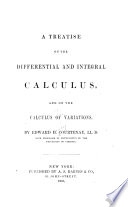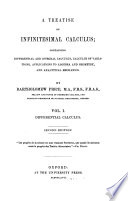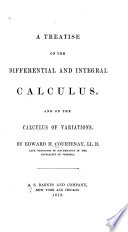 | Edward Henry Courtenay - Calculus - 1855 - 526 pages
...= a — b — x = - (a — 6) — x. Similarly, a-2 = x, x3 = x, &c., and, therefore, the parts arc all equal. . 16. To determine the number of equal...so that their continued product may be a maximum. DIFFERENTIAL CALCULUS. Let x = required number of parts ; then - = value of one part. aaa , ta\x .'.... | |
 | Edward Henry Courtenay - Calculus - 1857 - 522 pages
...-=- = a — b — 2* = 0 x = - (a — 6), and xl = a — b — x = -(a — 6) = x. Similarly, xt = x, x2 = x, &c., and, therefore, the parts are all...number of parts ; then - = value of one part. aaa . [a1z . • . - X - X - ece. to x factors = I -I = a maximum. xxx \.r/ .•. «=log 11=:* (logo—... | |
 | Bartholomew Price - Calculus - 1857 - 672 pages
...minimum ; viz. f (x) = e. Ex. 3. To find the number of equal parts into which a given number a is to be divided, so that their continued product may be a maximum. Let x be the number of parts ; and thus each part = - ; and therefore, if v(x) — the product of them, .-.... | |
 | Horatio Nelson Robinson - Calculus, Integral - 1867 - 498 pages
...-|- cos- #)• A. max. when x = -• ¿> 8. « = q A max. when x = cos. x. 1 -(- x tun. .e 9. Find the number of equal parts into which a given number a must be divided, that the continued product of these parts may be a maximum. i Each part must bo e, the number of I... | |
 | Edward Henry Courtenay - Calculus - 1873 - 528 pages
...(a — b) = x. ¿ ¿t Similarly, x2 = x, x3 = x, &c., and, therefore, the parts are all equal. 1C. To determine the number of equal parts into which...required number of parts ; then - = value of one part aaa /a\x .'. - X - X - &c. to x factors — I - 1 = a maximum. XXX \t/ . • . «=log I- J = x (loga—... | |
 | Edward Albert Bowser - Calculus - 1880 - 424 pages
...sine and cosine of any angle. When the angle = 135°. 17. Find the number of equal parts into which a must be divided so that their continued product may be a maximum. Let x be the number of parts, and thus each part equals -, and therefore и = (-) . from which we get x =... | |
 | James Morford Taylor - Calculus - 1884 - 270 pages
...revolution of a given ellipse about its major axis ? Ans. Altitude = the major axis divided by V3. 19. Find the number of equal parts into which a given number a must be divided that their continued product may be a maximum. , ,,,, , a Ans. The number of parts = -, and each part... | |
| |